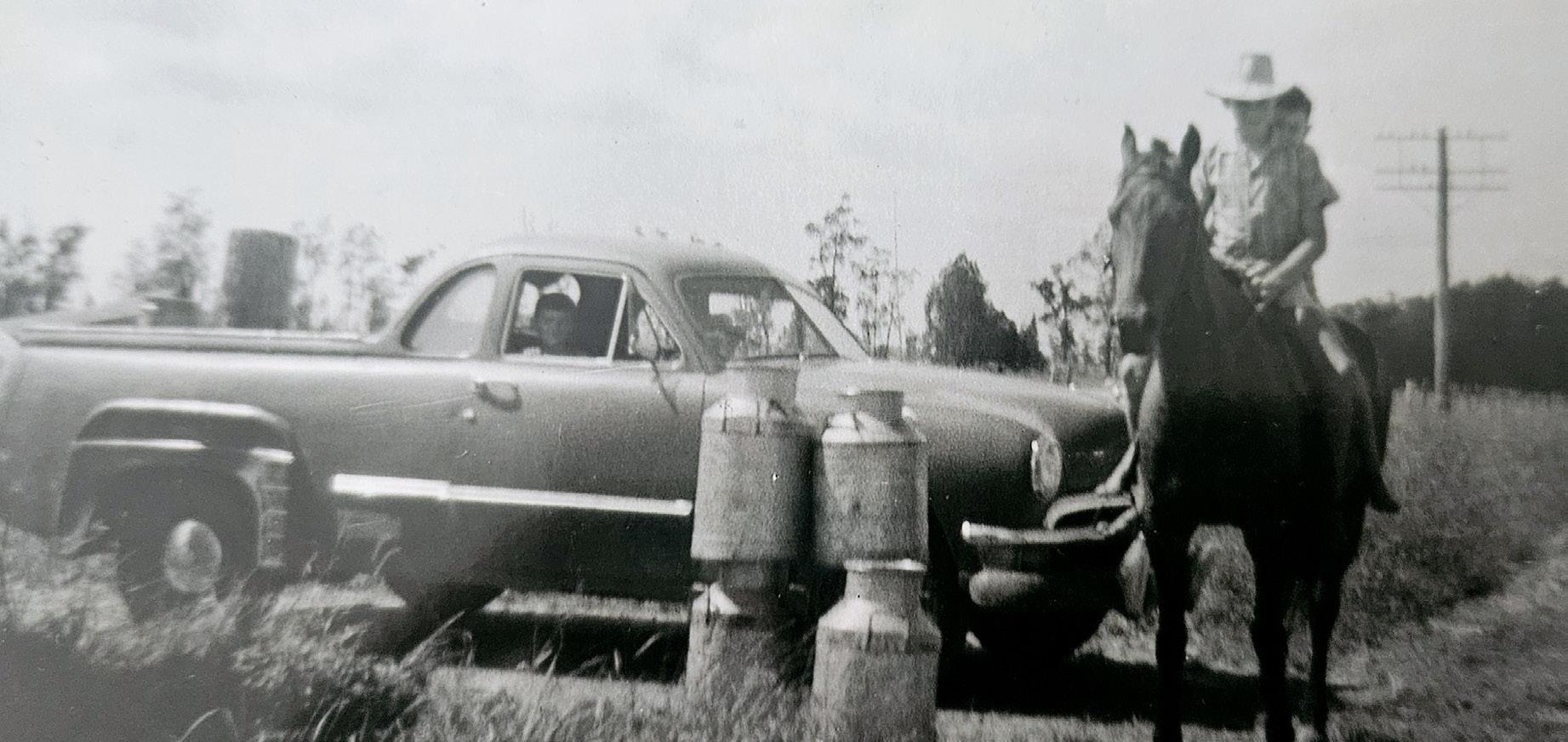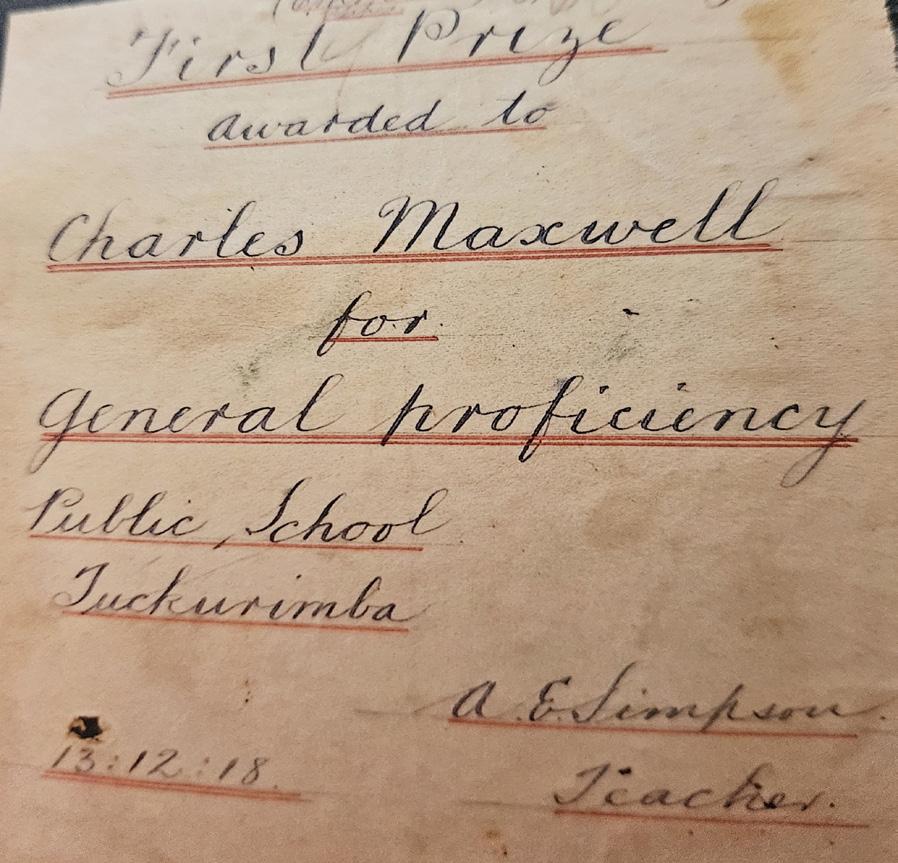
4 minute read
Statement on New Deforestation Defnition Comments attributable to NFF President David Jochinke
The National Farmers’ Federation (NFF) congratulates Cattle Australia for its leadership in clarifying what “deforestation” should mean in an Australian context.
As major customers, including the EU and Australian supermarkets, seek to safeguard their supply chains from deforestation, it is crucial that we have a shared defnition grounded in the practical realities of managing Australia’s unique landscape.
Cattle Australia’s work, following rigorous consultation, provides a proactive and constructive framework that the NFF fully supports. This effort will ensure that Australian farmers are aligned with international expectations while preserving the ability to manage the land effectively.
The initial reactions from Greenpeace and the Australian Conservation Foundation have been less productive.
These organisations continue to promote an outdated, “lock it up and leave” approach, which has proven to be ecologically harmful. Australia’s landscape requires active management, not abandonment, to address challenges such as invasive species, which are now the largest threat to biodiversity. Active management is also vital to protecting lives, property, and ecosystems from uncontrollable bushfres. Farmers, many of whom have managed the land for generations, understand these complexities.
Unfortunately, out-oftouch environmental groups seem unwilling to acknowledge the practical and scientifc realities of sustainable land management. Attempts by these groups to pressure Australian companies into banning sustainable farming practices are misguided and deserve to be called out. The NFF commends the Government and retailers for their continued engagement with industry on this issue, and for working collaboratively to fnd solutions that are both ecologically and economically sustainable.
We look forward to ongoing constructive dialogue as we work towards a more informed and balanced understanding of deforestation and land management in Australia.
By Helen Trustum

The frst school at Tuckurimba was built in the year 1890. It was built where Ray Hunts home is now on land owned by Mr Baxter. The building materials were landed by paddle- wheel barge on what was called Baxter’s low bank, now owned by Ray Hunt. The Tuckurimba residents got together with horses and slides to bring the material to the building site. As time went on, land was cleared and the population grew, the Department cancelled the old site and purchased two acres of land off the same owner Mr Baxter and built a new school where it remained until it closed in 1975. When the new school opened in 1896 there were 23 pupils – 5 Prestons, 4 Gaudrons, 3 Keehans, 2 Milgates, 2 Baxters and 1 Crisp, plus a few more.
There were 5 teachers in the old school – Miss Cameron who rode a horse from Tucki Tucki;
Mr Edwards who rode from Gundurimba; Miss Campbell rode from Buckendoon; Mr Duncan boarded with the Kennedy’s and Mr Sharpe who boarded with Mr Robertson.
A few years went by without any picnic days as there was no money and no transport. The parents had to pay 3d a week school fees for every child and found that hard to meet. In later years the sugar industry started up and more money came to the district. The residents decided to hold picnic days and by that time Mr Gaudron had oranges and bananas growing. He would get an order for one pound of fruit consisting of 10 dozen oranges and 15 dozen bananas. This fruit would be used for sporting prize: 1st prize being an orange, 2nd prize a large banana and 3rd prize a small banana. People would arrive travelling by horse and drays, others on horse and slide, or they would walk and carry the food with them.

In March 1917, the name of the school was changed to Delelvin.
Three months later the school was changed back to Tuckurimba.
In 1972 four men were presented with Life Membership badges of the Tuckurimba P and C in recognition of over 150 years of combined membership and executive positions held. They were Messrs. George Hunt, Richard Holme, and two brothers: Henry and Hamilton
McCaughey. The badges were presented by the North Coast Director of Education, Dr J. R. Joyce. Tuckurimba P and C was formed on 9th June 1930 with Mr George Hunt and Mr Hamilton McCaughey being two of the original offce bearers. Mr Jack Dolby, another of the association’s original offce bearers had recently passed away. The Empire Day Picnic held on the 24th May each year was a very popular day for all. A guest speaker would address the children followed by a great sports day. The annual Christmas Tree and concert was always a popular event on the calendar. Many books were purchased by the P and C for the school library.

The school children took part in Inter School Sports where John Riches went to Sydney to compete while other pupils represented the school at Zone Sports in Lismore.
Tuckurimba ReForestation Area
In the early 1930’s a move initiated by Hamilton McCaughey to have a piece of land near the school dedicated as a public reserve.
At the June meeting in 1931 the Tuckurimba P. and C. Association it was decided to apply to the Gundurimba Shire for the control of the crown land opposite the school consisting of 2 acres. The main purpose was to clear the undergrowth of lantana, wild bamboo and sally wattle. In 1936 the area was passed for the establishment of a school forest. By 1938, after several working bees were held, the control was in the hands of the Tuckurimba school teacher, Mr Archibald Campbell.
The P. and C. planted 100 hoop pines and water gums with the help of the school children. Successive plantings were made in the following years to 1941. In 1957 when the children of Tuckurimba School plus the P. and C. became aware that the koalas in the district were in danger of extinction, spaces in the area were flled with eucalypts donated by Hamilton McCaughey. By 1957 the trees had grown to 45 to 50 feet high. A large working bee was held to cut the trees out was arranged by the present teacher Jim Ormond, to enable the more vigorous to grow and develop into mill logs. The cut pines were sold to Lismore Case Mill managed by Mr A.K. Barnes. Teachers associated with the project were – Archibald Campbell, Emil Agst, Norman Baker, William Blevin, Wesley Keast and Jim Ormond.
Another 2 acres of land was donated by John Scott, making 4 acres of Re-Forestation.
Ref: RRHS in Lismore.
Teachers who have served at Tuckurimba
Name Date Appointed.
Miss Johanna Cameron 2/12/1890
Converted to a Public School from 1st April 1891. Mrs Benjamin Edwards 4/3/1893
Ernest Duncan 31/1/1895
Miss Mary Campbell 31/11896
Ernest A, Sharpe 17/6/1898
Ernest Kearns 18/8/1911
Arthur Simpson 2/4/1917
Norman Crook 3/9/1920
Stuart Rogers (relieving) 17/1/1923 to 28/6/1923
John Hensley 13/2/1930
Francis Stack 9/1/1931
Michael Fahey 13/1/1933
Wesley Watson 13/12/1933
Archibald Campbell 4/1/1937
Arthur Holmwood 6/9/1939 to 10/11/1939
Emil Agst 13/12/1940
Arthur Holmwood 13/9/1945
John Joyce 2/4/1946
Norman Baker 10/1/1947
William Blevin 3/2/1948
Wesley Keast 29/1/1952
William Bondfeld /2/1954
James Ormond 1/2/1955
Chris Bosse 1/2/1971 Tuckurimba School closed in 1975.
By Helen Trustum














